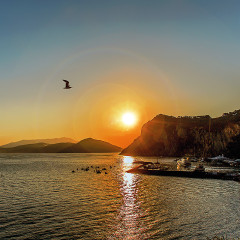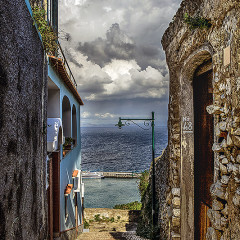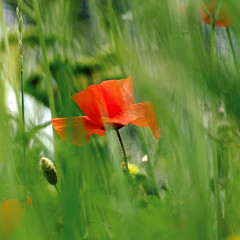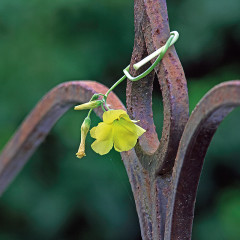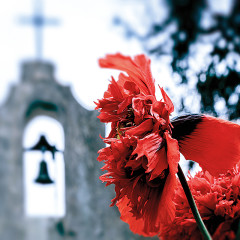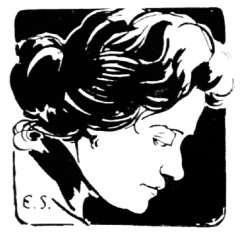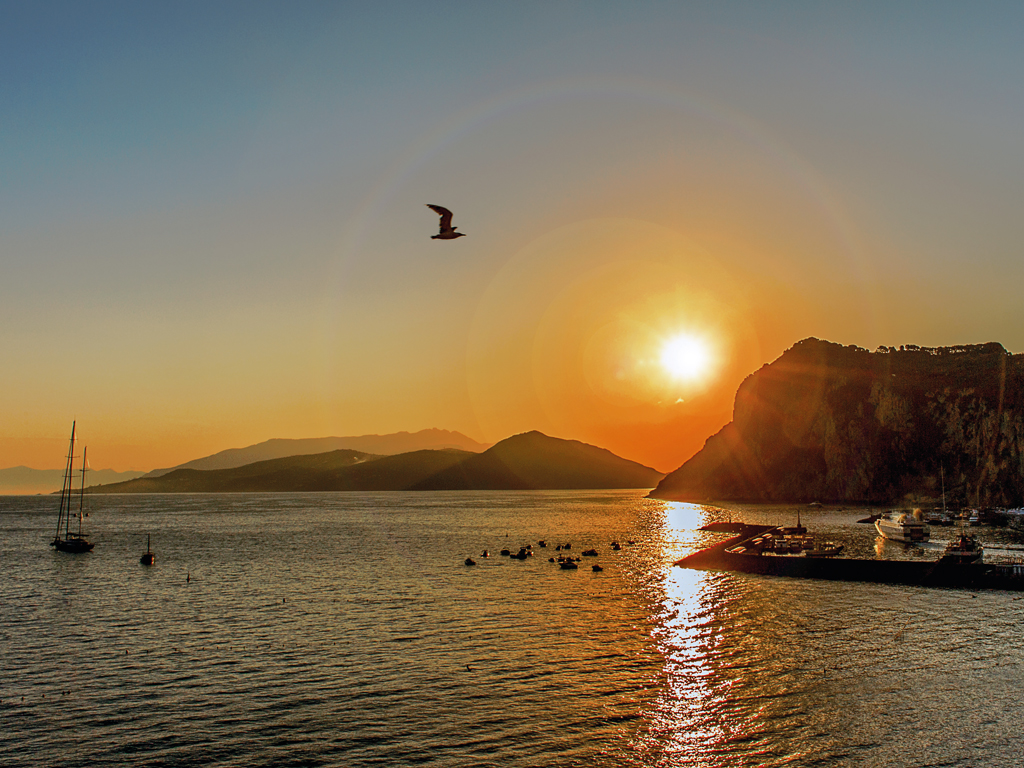
L’isola in versi
Poesie che parlano di albe e di tramonti, di fiori, colori e profumi. E portano la firma di Ada Negri
di Daniela Liguori | foto di Raffaele Lello Mastroianni
Soprannominata ai suoi esordi letterari la “vergine rossa” per aver incentrato la sua produzione poetica su temi e questioni sociali e divenuta poi celebre come “poetessa d’Italia” in quanto unica donna ammessa alla Reale Accademia d’Italia, Ada Negri arriva a Capri nella primavera del 1923. Ha 53 anni e dolorosi eventi hanno da poco segnato la sua vita: il divorzio da Giovanni Garlandi, la tormentata storia d’amore di cui scrive nel Libro di Mara, e la morte della madre. L’isola l’accoglie con tutta la sua bellezza e seduce il suo “cuore d’evasa” con l’irruenza con cui “il libeccio trascina le nubi per i capelli” e la leggerezza con cui un unico azzurro di mare e di cielo fa vibrare insieme “l’onde e le stelle”.
A Capri incontra Edwin Cerio, allora sindaco dell’isola, architetto e scrittore noto per i suoi saggi sulla tutela del paesaggio che, oltre ad accoglierla con un tripudio di fiori color porpora sulla soglia dell’hotel Quisisana, la invita a soggiornare presso la sua villa “Il Rosaio” ad Anacapri, un complesso di case collegate tra loro da pergole e rampicanti, vitigni e roseti. «Qual le dia il nome, ignoro tanti intorno le sboccian roseti candidi e gialli; ma forse è il purpureo, che il muro a levante inghirlanda; e pur nell’inverno ha potenza di fronde e di fiori», scrive ne Il Rosaio. E se alla villa dedicherà anche l’incipit de Il giardiniere delle rose, l’affinità che durante il soggiorno caprese la lega a Cerio sarà da lei ricordata come una “comunione solare” vissuta “qualche giorno della vita” e la presenza di lui è adombrata in alcune liriche tra cui L’uomo e la casa: «a colloquio con tre solitudini, l’acqua, la terra e il vento, tu vivi, Uomo dell’Isola: che il mondo hai percorso, ma qui le radici affondi».
Incantata dall’erompere di colori e profumi del mare di Ulisse e dei Ciclopi, dai fiori che “sgorgano” dagli spacchi della roccia per lo “scherzo dei venti”, la poetessa vive sensualmente le albe color d’ametista, i cieli di pallido argento, i papaveri che “fra l’erbe dan sangue”. E i rumori: i venti che scuotono alberi e fiori, il frangersi dei remi e il fruscio delle reti dei pescatori, il ronzio dei telai e le preghiere recitate dalle donne.
Invitata da Cerio a tenere un discorso in occasione dell’inaugurazione del “Circolo di Cultura e d’arte in Capri” Ada Negri confesserà tuttavia di essere turbata dalla “rivelazione di Capri”: «Sole, vento, profumo, colore e il misterioso influsso, l’elemento imponderabile della poesia che emana da questa terra di miti, mi hanno provocato uno stato d’incantamento, fonte al tempo stesso di oscura sofferenza, di crudele dolore e di intimo tormento. Prima di toccare il sole di Capri, non sapevo che la bellezza potesse ferire a tal punto». Se “Solaria” è il nome che la Negri darà a Capri, il sole caprese è per lei potente bagliore che lascia fiorire le rose d’inverno e divenire “folli” gli occhi, fa vibrare il cuore nel suo “cavo di roccia” e provoca “male di luce”. Sull’isola la scrittrice si sente esposta alla natura prepotente e dura di una “terra senza pietà” che “macera” e “strazia”, «ti ruba a te stessa, ti svuota della memoria, poi con una risata di sole, ti scaglia a mare, consunta scoria». La sua bellezza è turbamento e patimento, piacere inquieto e vertigini. Le ombre e i ricordi che affiorano nella sua mente diventano l’occhio col quale ella guarda l’isola stessa e il mare. Un mare che “abbraccia” Capri come un “magnifico amante” e al contempo la “imprigiona”, ne “solca” la pelle, “a volte le riga le reni di sangue”. E “l’isola intera zampilla di rosso” quasi fosse “ferita di coltello”. Della Grotta Azzurra scrive che è “carne di luce… scavata dalla passione del mare”. Troppo forte le appare improvvisamente anche il vento; «inciso di cicatrici, saturo d’odio, forse d’amore il Monte Tiberio».
Solaria svela così il suo volto nascosto di velenosa euforbia, pianta dalle innumerevoli sfumature cromatiche e dai “fiori perfetti” ma “gonfia di tossico”; si rivela sublime miraggio dove abbandonarsi è insieme “un troppo dolce esser vinta” e “ardere”. Di qui il timore che l’isola «sparire potrebbe, così, all’improvviso» e che, sotto il piede, vi sia «non terra, non pietra, ma aerea sostanza di nube»; di qui il prender coscienza della lontananza tra cielo e terra: «rose e stelle si guardano, fisse, con occhi immensi» e «c’è così poco fra loro: un po’ d’aria: solo un po’ d’aria; e non posson baciarsi»; di qui l’invocazione all’isola perché le conceda “la morte azzurra” o la lasci tornare al paese materno.
A luglio l’incanto finisce, la vacanza sull’isola si conclude e una melanconia dal “sapore di terra bagnata” interrompe l’ebbrezza, non più sospinta “tra l’onde e le stelle” – «c’era una gioia e un tormento in quell’andare e venire delle onde» – Ada Negri non può che vedere l’Orsa maggiore “caduta nel mare”.
Canti d’amore e di natura
Le nuvole che il libeccio fa correre nell’azzurro del cielo, i giardini fioriti, l’alba color ametista, la scalinata di Torre Saracena, il respiro del mare, la vertigine, la luna, le distese di ginestre sui fianchi del Castiglione, la roccia del Solaro. C’è tutto di Capri ne I canti dell’isola (La Conchiglia Ed.), la raccolta di poesie scritte tra l’aprile e il luglio del 1923 da Ada Negri, la prima donna ad essere ammessa all’Accademia d’Italia. Sono canti d’amore e di natura dove la parola segue il ritmo del cuore e l’isola è come «una dorata nuvola emersa dal fiato del mare». Leggerli è tutta un’esplosione di luci e colori, di profumi e palpiti. Di emozioni che fanno bene al cuore. | Songs of love and nature. The libeccio making the clouds course through the blue sky, the gardens in bloom, the amethyst dawn, the Torre Saracena steps, the breath of the sea, the light-headedness, the moon, the stretch of gorse along the sides of the Castiglione, the Solaro rock. You find all of Capri in Songs of the Island (Italica Press, 2011) – Ada Negri’s collection of poems written between April and July 1923. In these songs of love by the first woman to be admitted to the Academy of Italy, words follow the rhythm of the heart and the island is like “a golden cloud emerging from the breath of the sea”. To read these poems is to experience an explosion of light and colours, perfumes and heart beats. Feelings that are good for the soul.
The island in verse
Poems that speak of sunrises and sunsets, flowers, colours and perfumes in the words of Ada Negri
by Daniela Liguori | photos by Raffaele Lello Mastroianni
Named “the red virgin” for her focus on social problems during the early days of her literary career, Ada Negri was later known as “Italy’s poetess” for being the only woman admitted to the Royal Academy of Italy. Ada Negri arrived in Capri in the spring of 1923. She was fifty-three at the time and carried deep scars in her heart due to her divorce from Giovanni Garlandi, to her tormented love affair described in The Book of Mara, and to her mother’s death. The island welcomed her with all its beauty and seduced her “fugitive heart” with the impetuousness with which “the libeccio drags clouds by their hair” and the lightness with which the blue sea and sky make the “waves and stars” vibrate in unison. In Capri she met Edwin Cerio, mayor of the island, architect and writer well known for his papers on landscape protection. After greeting her with a spectacular display of purple flowers at the entrance to the Hotel Quisisana, he also invited her to stay at his villa “Il Rosaio” (The Rosebush) at Anacapri, a complex of houses connected to each other by pergolas and climbing plants, vines and rose gardens. “Which rosebush it is named after I do not know, many white and yellow rosebushes flower nearby; but maybe it’s the purple one that festoons its eastern wall and that even in winter is laden with leaves and flowers” she writes in Rosaio. And although she even dedicates the opening lines of Il giardiniere delle rose to the villa, remembering the affinity she had with Cerio during her stay in Capri as a “sunny communion”, experienced for “a few days in life”, his presence occasionally appears somewhat obscured, as in her poems of The Man and the House: “conversing with three solitudes, water, earth and wind, you live Man of the Island: you have travelled the world but your roots are here”. Enchanted by the explosion of colours and perfumes of the sea of Ulysses and the Cyclops and by the flowers bursting out from the cracks in the rocks carried there by “the wind’s tricks”, the poet sensually experienced the amethyst coloured sunrises, the pale silver skies and the poppies that “bleed in the grass”. And the sounds: the winds shaking trees and flowers, the crashing of oars, the whispering of fishermen’s nets, the humming of looms and of women’s prayers. Although Cerio invited her to make a speech at the inauguration of the “Capri Art and Culture Society”, Ada Negri confessed that she was unsettled by the “revelation of Capri”: “Sun, wind, perfume, colour and the mysterious attraction, the imponderable element of poetry that springs from this land of myths have cast a spell on me which is also source of dark suffering, cruel pain and intimate torment. Before touching the sun of Capri, I was not aware that beauty could hurt so much”. Ada Negri names Capri “Solaria”, for its sun is that powerful blaze that makes roses to bloom in winter, “maddening” the eyes and making her heart vibrate in the island’s “rock cave” with its painful light. On the island the poet felt exposed to the powerful harsh nature of a “land without pity” that “afflicts” and “torments”, “steals yourself from yourself, empties your memory, then with a sunny smile, hurls you into the sea, worn out debris”. Capri’s beauty was turmoil and suffering, restless pleasure and light-headedness. The shadows and memories that surfaced in her mind became the eyes with which she observed the island itself and the sea. A sea that “embraces” Capri like a “magnificent lover” and at the same time “imprisons” the island, “cutting through” its skin “at times scoring its kidneys with blood”. And “the whole island gushes red” as if it were “stabbed with a knife”. About the Blue Grotto Ada writes that it was “flesh of light” “dug out by the passion of the sea”. Even the wind suddenly seemed too strong to her; “Mount Tiberio carved with scars, replete with hate or maybe love”. Solaria revealed its hidden nature, Capri is like a poisonous Euphorbia, a plant of many colours and “perfect flowers” but “swollen with poison”, a sublime mirage where to abandon oneself is both “too sweet a surrender” and “a burning”. From here unfolded her fear that the island “could disappear, suddenly” and that, under her feet there was “not earth, not rock, but ethereal substance of clouds”; she became aware of the distance between sky and earth: “roses and stars look at each other, staring, with immense eyes” and “there is so little between them: a little air: only a little air; and they cannot kiss each other”; she then voiced her plea to the island to grant her “a blue death” or a return to her maternal country. By July the spell was broken, the holiday on the island came to an end and melancholy “tasting of wet earth” interrupted the exhilaration, no longer urged on “between the waves and the stars” – “there was joy and torment in the coming and going of the waves” – Ada Negri can but see the Great Bear “fallen into the sea”.






